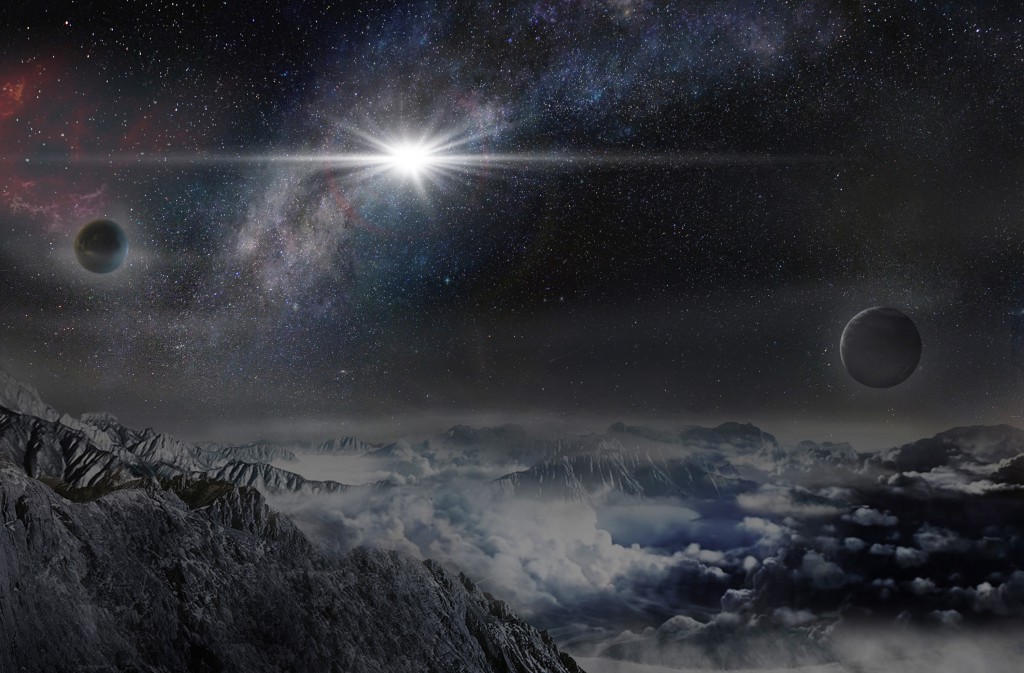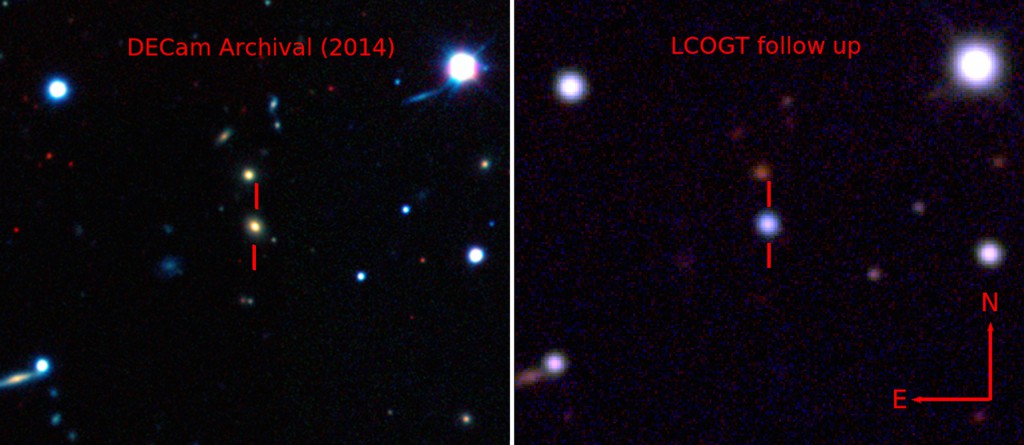
When massive stars die, they go into the darkness. Instead, they release most of their mass and energy together with a powerful explosion, leaving a huge glowing cloud of gas and remnants of the nucleus of the dead star. Such objects are called supernovae. In June 2015 at the southern hemisphere night sky astronomers have discovered a supernova, which could be formed from sverkhlegkojj type stars and got through this very impressive property.
The supernova, dubbed ASASSN-15lh, according to the observations of astronomers, 20 times brighter than all together (100 billion) stars in our galaxy, the milky way, which makes it the brightest supernova in the history of observation of such objects. She is twice the maximum brightness recorded for this type of stars.
A dying star, typically releases enormous amount of energy. However, researchers are confident that this energy is insufficient for the formation of such a bright object, as ASASSN-15lh. A group of astronomers under the leadership of don Sub from the Chinese Institute of astronomy and astrophysics Kavli name believes that the unusually bright supernova could be formed from a very rare type of stars, called magnetars.
When a star dies, its mass collapses into the nucleus. A large part of it is destroyed in an explosion a second later, but what remains still has a very dense mass of neutrons and called a neutron star. Sometimes these neutron stars have a stronger than usual magnetic field, about 10 trillion times stronger than Earth magnetic field. These objects are called magnetars scientists.
Astronomers previously found and magnetars. For example, in the center of the milky way is several such objects. However, they all like the object ASASSN-15lh. Most magnetars have a low speed of rotation and typically run from one to ten revolutions per second. However, don and his colleagues believe that the Magnetar in the supernova ASASSN-15lh makes a thousand revolutions per second. And this, among other things, limit the speed of rotation of magnetars, according to theoretical physics.

The change in false colours images of the galaxy before the explosion ASASSN-15lh captured by the camera Dark Energy Camera (left), and after the birth of a supernova captured by a global network of telescopes of the Las Cumbres Observatory (right)
The energy of this rotation is the source of power of a supernova.
“Over time, the star stronger and stronger slows down its rotation due to the loss of its rotational energy. In the end, this energy loss is marked by the stream of charged wind that hits supernova and makes it even brighter,” says Todd Thompson, co-author of the study from Ohio state University (USA).
For the formation of such a bright supernova, which is ASASSN-15lh, you want almost all the energy of the Magnetar was transformed into light. Such phenomenon from a technical point of view possible, but it happens very rarely and is actually located on the border of our knowledge about how in General behave magnetars.
“We need all the energy very rapidly rotating Magnetar to form this kind of supernova, which we can observe in this case,” says study co-author Kris Stanek of Ohio state University (USA).
The team notes that this unusually rare combination of circumstances is on the verge of what physics currently know about magnetars. However, this particular scenario is the most likely explanation for the unprecedented brightness ASASSN-15lh.
The star, which formed from the supernova ASASSN-15lh, had to be very massive, blue, hot star with a very high rotation speed. Most likely, it has lost its outer layers of hydrogen and helium shortly after his death, as these elements could not be detected in a supernova. Through various telescopes around the world, scientists conducted a spectral analysis to find out which chemical elements may be contained in the remaining stars from the gas cloud.
Astronomers are not yet sure about, however there is an assumption that the star from which the supernova appeared later, belonged to the class of massive stars, wolf — Rayet.
“There are stars which have no hydrogen or helium. Many of these stars have very high rotation speed. Such stars are called stars wolf — Rayet. I wouldn’t exclude the possibility that earlier this supernova was just one of those stars. Because these stars really are, and we have found a supernova fits this description. It is rare, does not have helium and hydrogen, it is massive and has a very high rotation speed,” says Stanek.
Supernova ASASSN-15lh is approximately 3.8 to 4 billion light years. In other words, now we see a ghostly light from the explosion of a star that happened billions of years ago, when our planet was a cooling process. The light from it reached Earth in June 2015 and was first discovered by a pair of telescopes in Chile, which is part of a global network of telescopes All-Sky Automated Survey for SuperNovae, or abbreviated as ASAS-SN.
Star ASASSN-15lh is one of 180 supernova that has been detected by the network ASAS-SN in 2015, and one of 270 stars discovered since the start of this surveillance program, which began about two years ago.
“This is truly an amazing discovery. People are observation and study of supernovae many decades. Meanwhile, our project in just two years. However, during these two years we found the object, the opening of which was jealous of many scientists dealing with the issue of a supernova”, says Stanek.
The study of the brightest ever discovered a supernova quickly grew into international cooperative efforts. Joined the project of the Observatory in Chile, South Africa and even the telescope of the Swift space Agency NASA has sent his gaze to one of the brightest sources of light in the Universe. Everyone wants to get more quality shots and more detailed spectral analysis of detected object. In February 2016 the space telescope “Hubble” will take pictures of the supernova ASASSN-15lh to help a team of researchers to determine how close it is to the center of its galaxy. If you find that supernova is located in the galactic core, astronomers will need to find another explanation for the brightness of ASASSN-15lh, which does not contradict the definition of the interaction of light stars with the supermassive black hole located in the center of this galaxy. Stanek notes that this is an unlikely scenario, however, should not be deleted.
Astronomers often called supernova short-term events. They explode, illuminating everything around, but then slowly start to fade away.
“The most important thing is to get a spectral analysis of the stars when it is fading. With the demise of the star cools and becomes more, thus loosing its brightness,” says Thompson.
“As the star becomes cooler and, therefore, loses its brightness, it is possible to discover these stars is becoming harder and harder, but at the same time this event allows you and a better look at what is inside such stars”.
This gives astronomers an opportunity to study the inner layers of the supernova, and not only their external borders.
“Usually, access to this information is very limited, so as to reach the middle very difficult. So we try not to miss such opportunities,” explains Stanek.
Stanek and Thompson hope that this discovery will push overall theoretical physicists to revision of current models for the formation of magnetars and the search for alternative possible explanation for such an unusual brightness ASASSN-15lh.
“It is very interesting to observe the reaction of theoreticians, when such extreme events are faced with generally accepted theories and models. They are literally forced to look for a more modern explanation and models and are driven by theoretical physics to new boundaries,” the researchers note.
